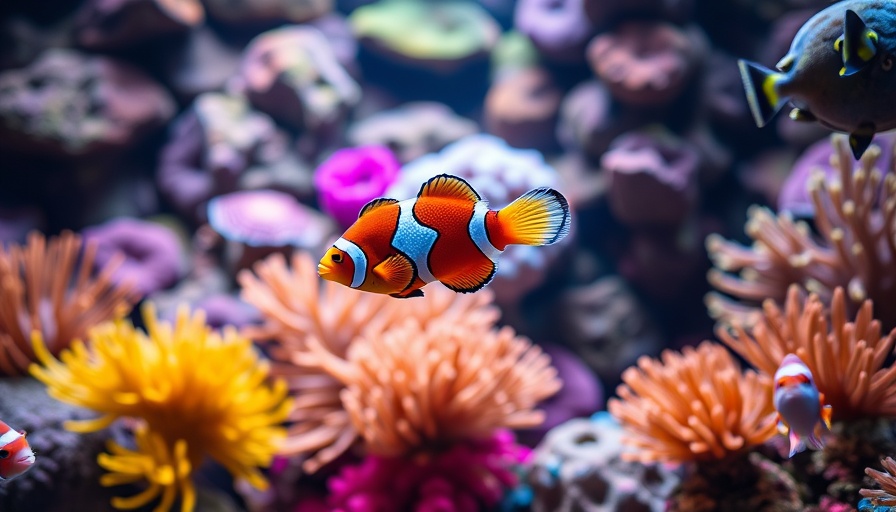
Understanding Nitrates in Your Aquarium
Nitrates are a byproduct of the nitrogen cycle in your aquarium, often resulting from fish waste and decaying plants. While they are less harmful than ammonia and nitrites, they can still pose significant health risks to your aquatic ecosystem. Keeping nitrate levels under control is essential for maintaining a healthy environment, and this involves regular monitoring and management.
Why Nitrates Can Be Harmful
High nitrate levels can lead to poor fish health, affecting their immune systems and overall vitality. While fish can tolerate some nitrate, levels exceeding 100 ppm should be taken seriously—indicating a potential emergency situation. Symptoms of high nitrates may involve lethargy, sluggish growth, and skin ailments like sores. Young fish are particularly susceptible, which makes it crucial for aquarists to be vigilant in monitoring and adjusting nitrate levels.
How to Effectively Monitor Nitrates
For a well-balanced aquarium, frequent testing is key. It's advisable to maintain nitrate levels below 10 ppm, although this threshold might vary depending on whether you have a freshwater or saltwater setup. A practical tip is to start monitoring your source water; if your tap water already has high nitrate levels, consider using an alternative water supply.
Effective Methods to Reduce Nitrate Levels
Reducing nitrates doesn't have to be cumbersome; a variety of methods can facilitate this process:
- Regular Water Changes: Doing partial water changes—about 10-15% weekly—helps physically remove nitrates from your tank.
- Adding Live Plants: Aquatic plants absorb nitrates for growth, helping to reduce levels in your aquarium naturally.
- Utilizing Nitrate Removers: Specialized chemical filters and media can also be effective in lowering nitrate concentrations.
- Feeding Practices: Overfeeding fish leads to excess waste, so adjusting feeding schedules and quantities can inadvertently lower nitrate levels.
The Best Nitrate Removers
When choosing nitrate removers, options can range from chemical additives to more natural solutions like specific bacteria that feed on nitrates. Brands vary greatly, so thorough research is necessary to find the product that best suits your tank's needs. In many cases, a multi-faceted approach combining both natural and chemical solutions provides the best results.
Future Predictions and Trends in Aquarium Care
As awareness grows, more pet owners and veterinarians are adopting sustainable practices in aquarium maintenance. Future technologies may bring forth innovative nitrate-filtering systems that require less maintenance and provide greater efficiency—potentially transforming the way we manage our aquatic environments.
Practical Insights for Pet Owners
Whether you’re a seasoned aquarist or a newcomer intrigued by fish care, understanding how to manage nitrates is vital. Start today—invest in an aquarium testing kit, familiarize yourself with your tank’s specific needs, and consider incorporating live plants or alternative feeding practices. This not only enhances your aquarium's health but also provides a more vibrant and fulfilling environment for your aquatic friends.
As a community of pet lovers, let’s champion better practices for the well-being of our aquatic companions and inspire others to do the same. Whether you’re a veterinarian, trainer, or just a passionate pet parent, sharing knowledge is key. Together, we can ensure that our aquatic ecosystems thrive for years to come!
 Add Row
Add Row  Add
Add 




Write A Comment